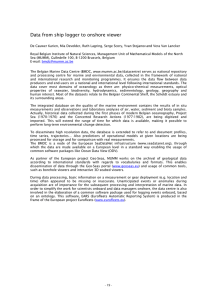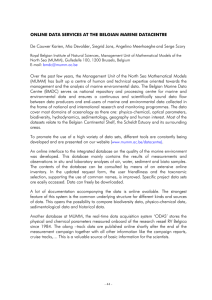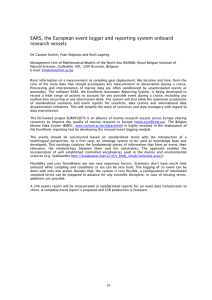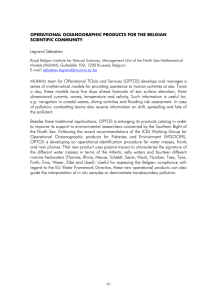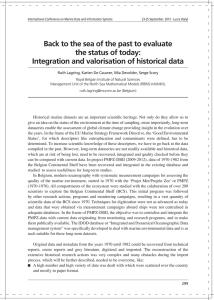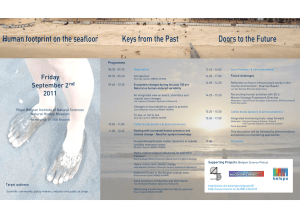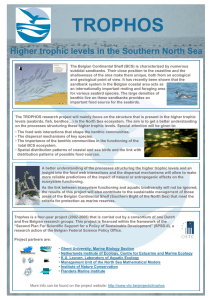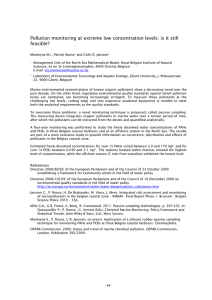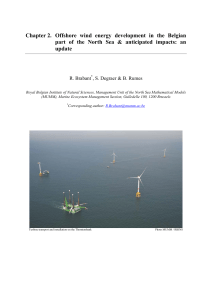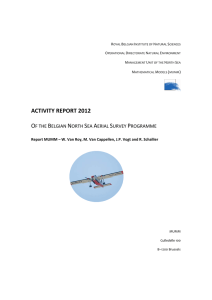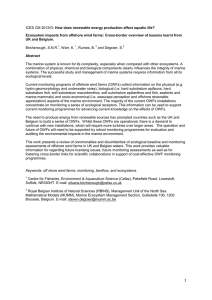Belgian marine geological and environmental data in a European context
advertisement
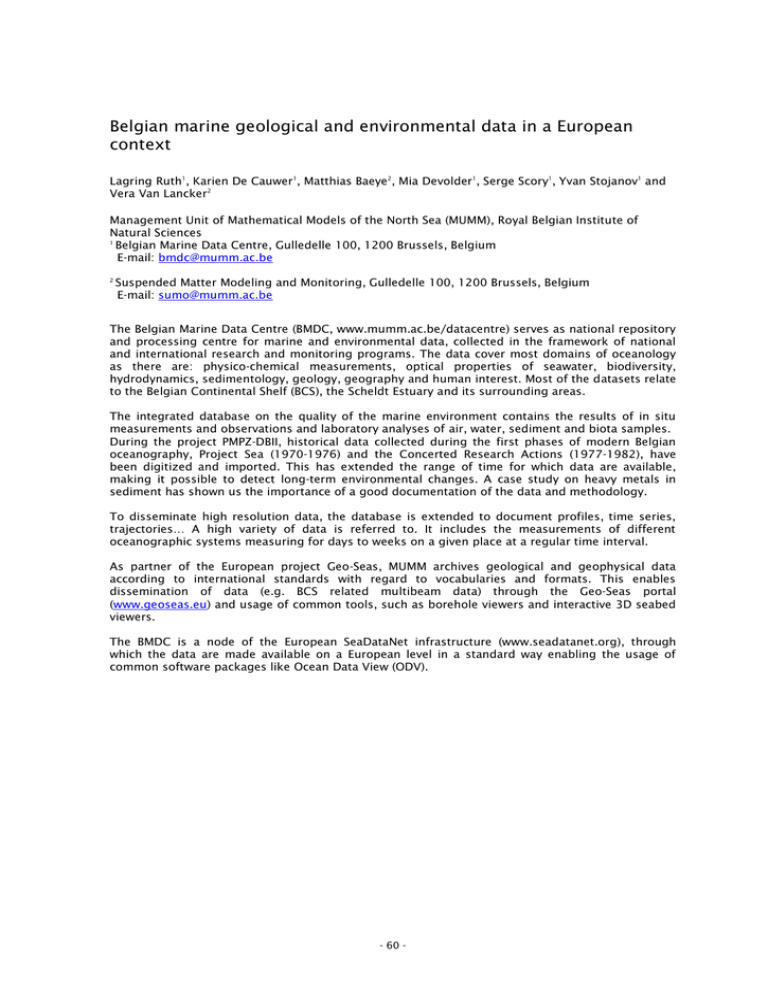
Belgian marine geological and environmental data in a European context Lagring Ruth1, Karien De Cauwer1, Matthias Baeye2, Mia Devolder1, Serge Scory1, Yvan Stojanov1 and Vera Van Lancker2 Management Unit of Mathematical Models of the North Sea (MUMM), Royal Belgian Institute of Natural Sciences 1 Belgian Marine Data Centre, Gulledelle 100, 1200 Brussels, Belgium E-mail: bmdc@mumm.ac.be 2 Suspended Matter Modeling and Monitoring, Gulledelle 100, 1200 Brussels, Belgium E-mail: sumo@mumm.ac.be The Belgian Marine Data Centre (BMDC, www.mumm.ac.be/datacentre) serves as national repository and processing centre for marine and environmental data, collected in the framework of national and international research and monitoring programs. The data cover most domains of oceanology as there are: physico-chemical measurements, optical properties of seawater, biodiversity, hydrodynamics, sedimentology, geology, geography and human interest. Most of the datasets relate to the Belgian Continental Shelf (BCS), the Scheldt Estuary and its surrounding areas. The integrated database on the quality of the marine environment contains the results of in situ measurements and observations and laboratory analyses of air, water, sediment and biota samples. During the project PMPZ-DBII, historical data collected during the first phases of modern Belgian oceanography, Project Sea (1970-1976) and the Concerted Research Actions (1977-1982), have been digitized and imported. This has extended the range of time for which data are available, making it possible to detect long-term environmental changes. A case study on heavy metals in sediment has shown us the importance of a good documentation of the data and methodology. To disseminate high resolution data, the database is extended to document profiles, time series, trajectories… A high variety of data is referred to. It includes the measurements of different oceanographic systems measuring for days to weeks on a given place at a regular time interval. As partner of the European project Geo-Seas, MUMM archives geological and geophysical data according to international standards with regard to vocabularies and formats. This enables dissemination of data (e.g. BCS related multibeam data) through the Geo-Seas portal (www.geoseas.eu) and usage of common tools, such as borehole viewers and interactive 3D seabed viewers. The BMDC is a node of the European SeaDataNet infrastructure (www.seadatanet.org), through which the data are made available on a European level in a standard way enabling the usage of common software packages like Ocean Data View (ODV). - 60 -
